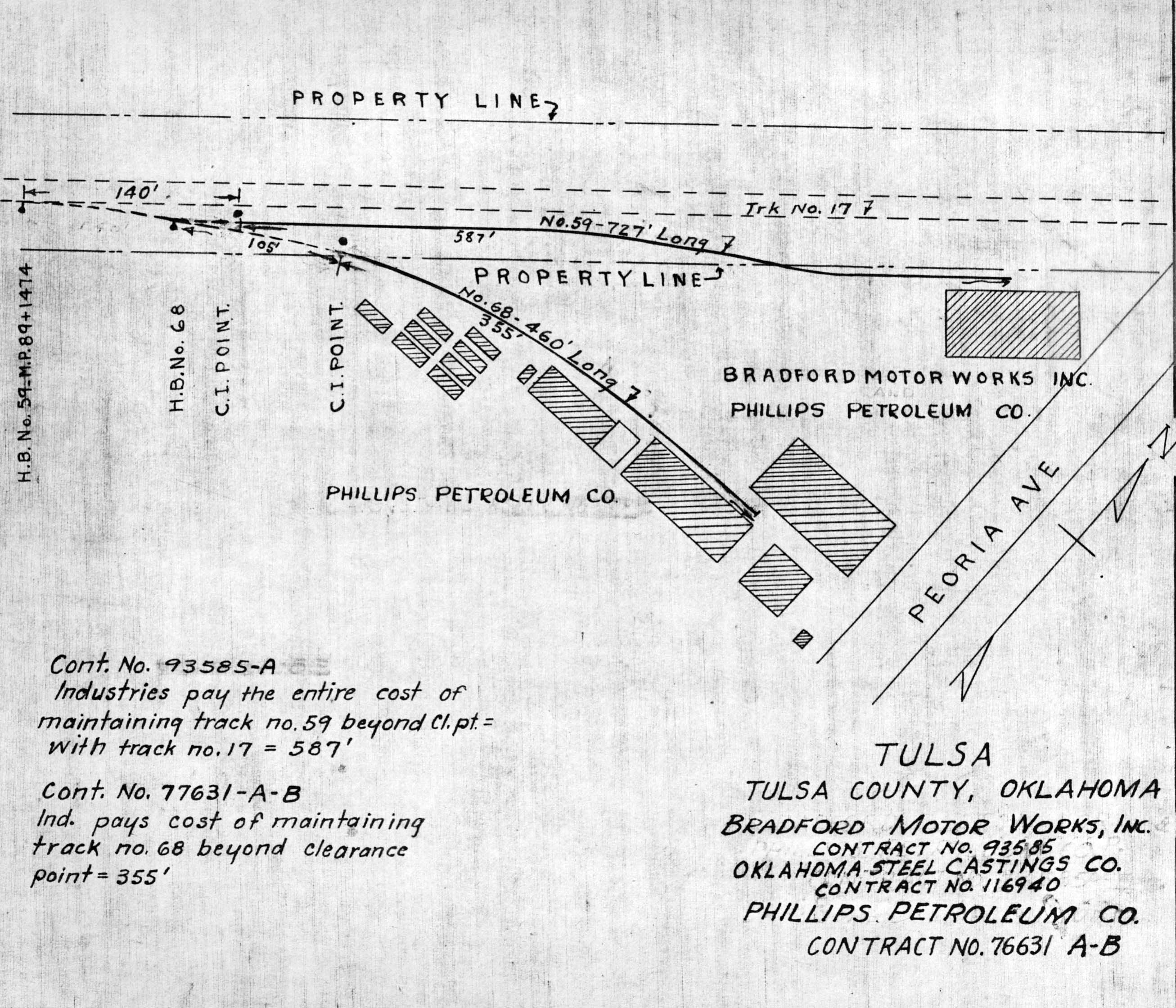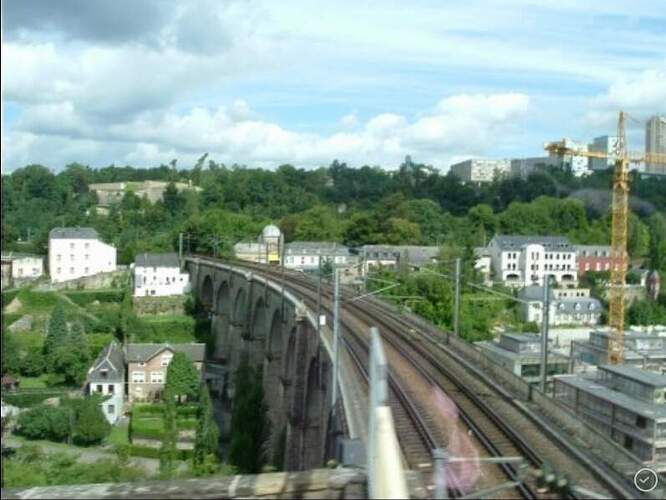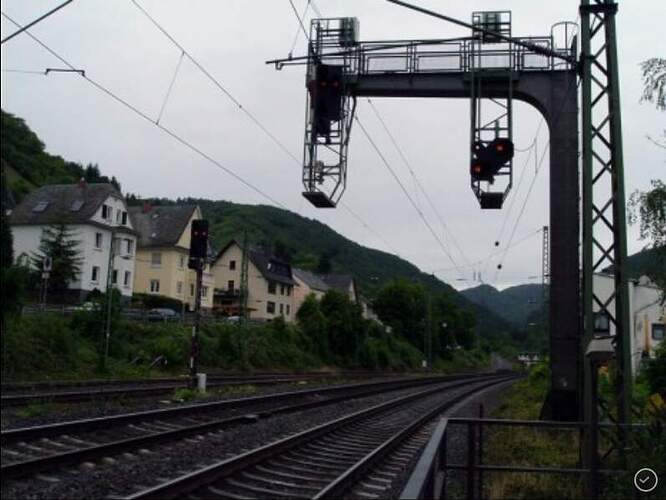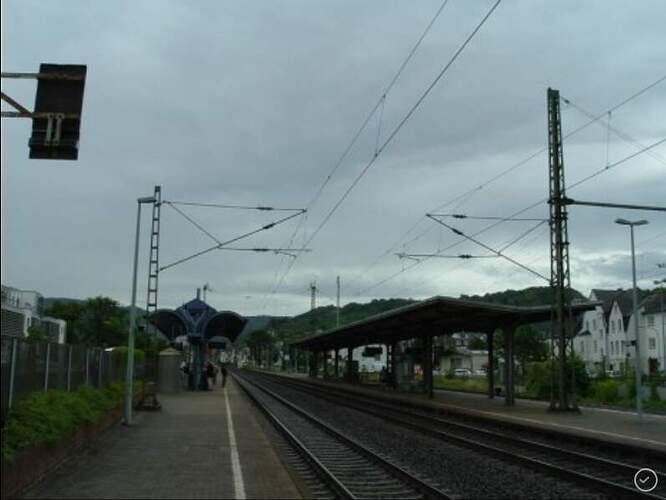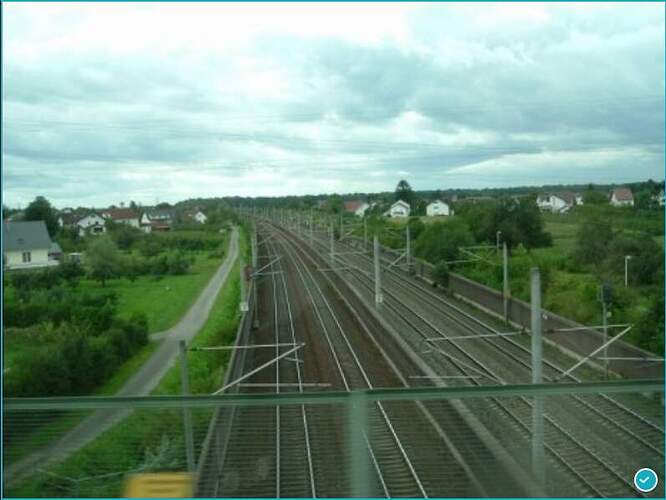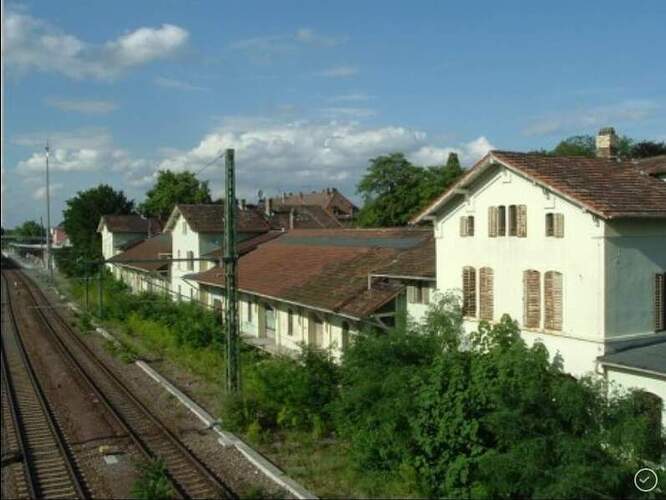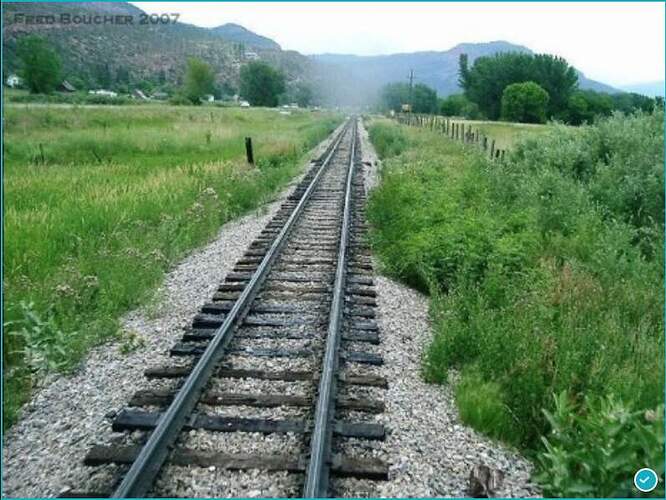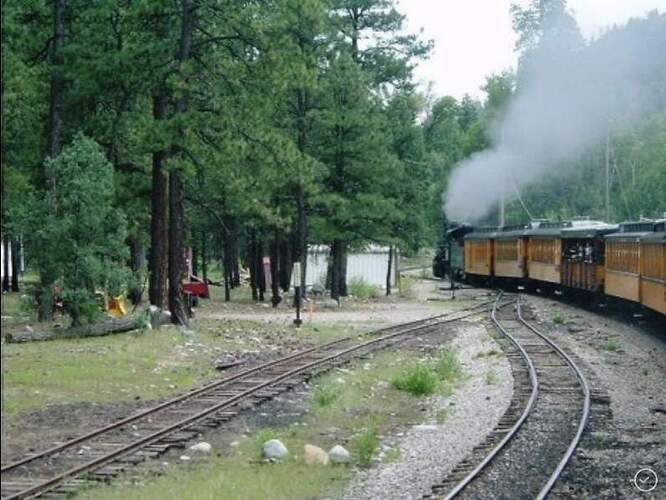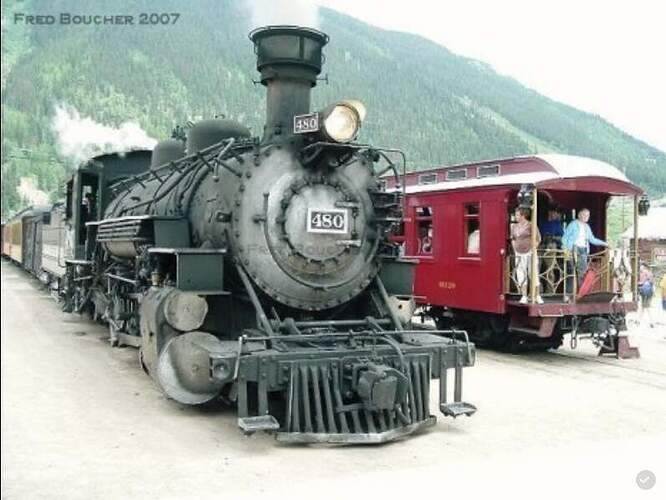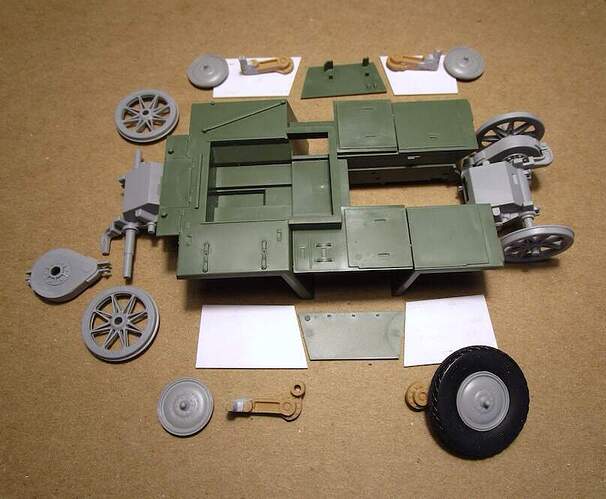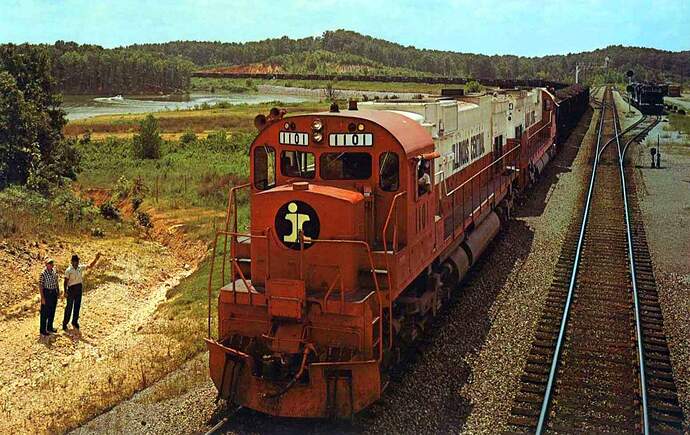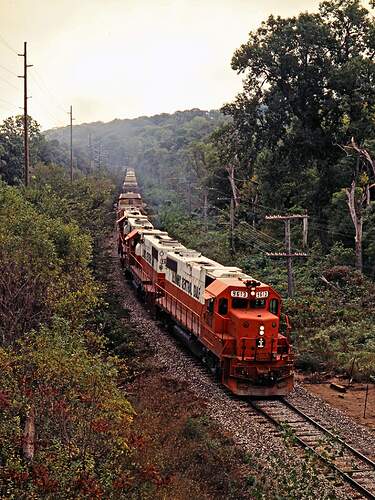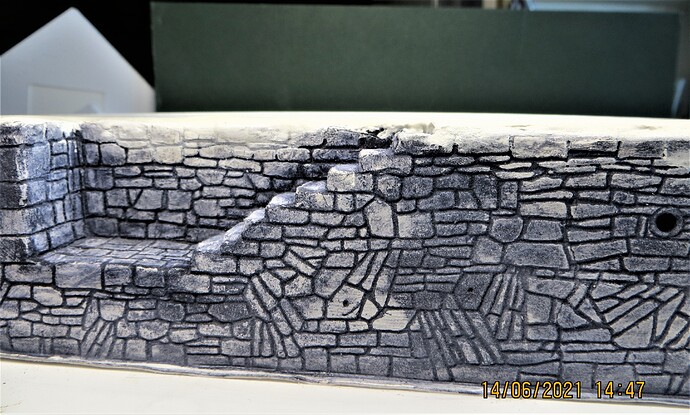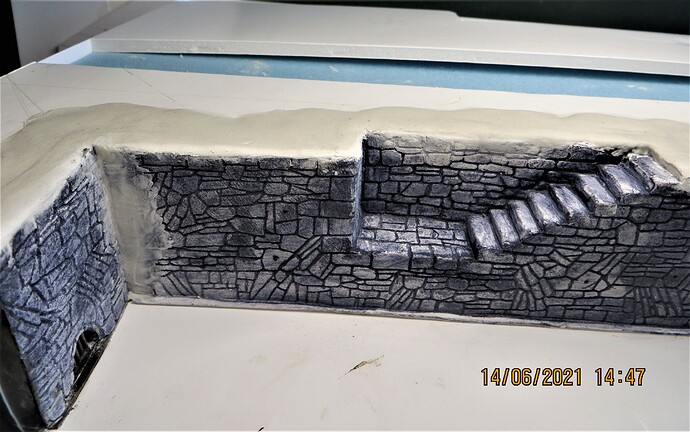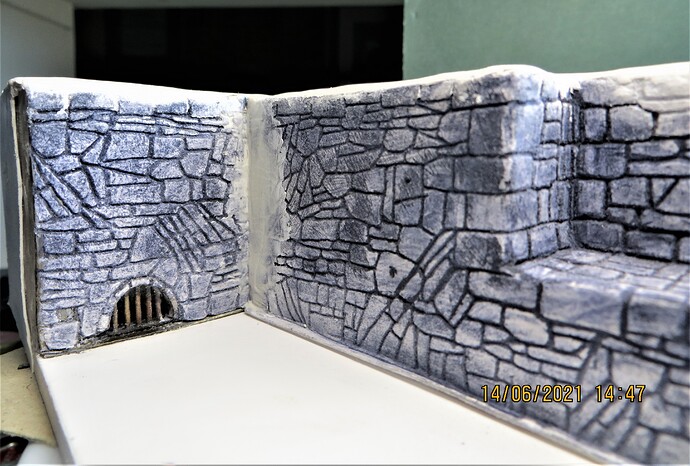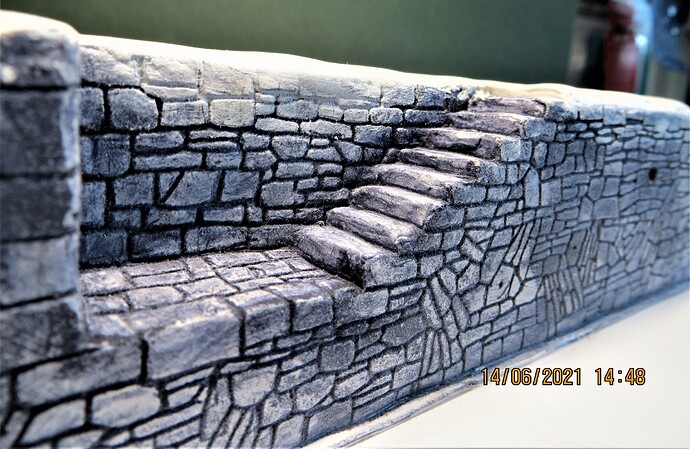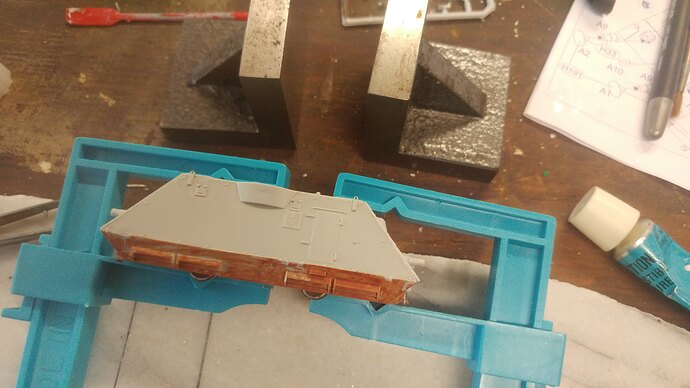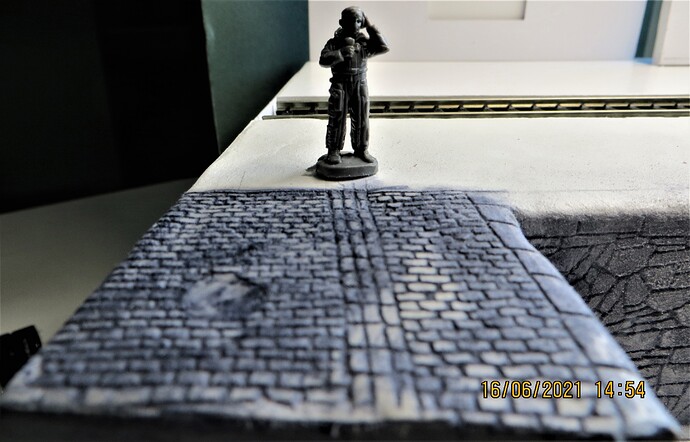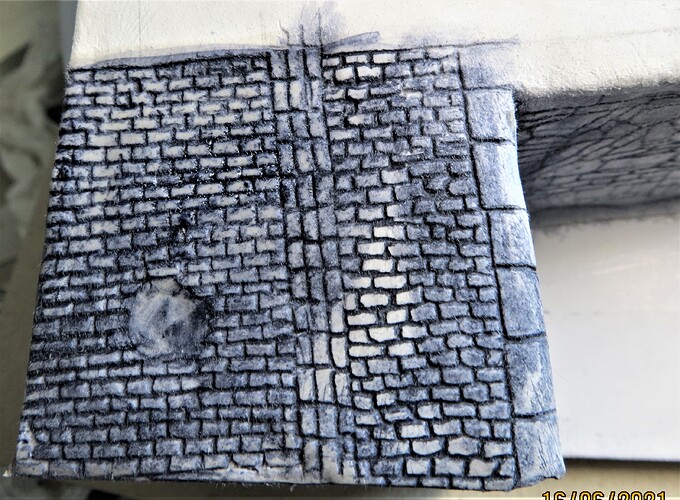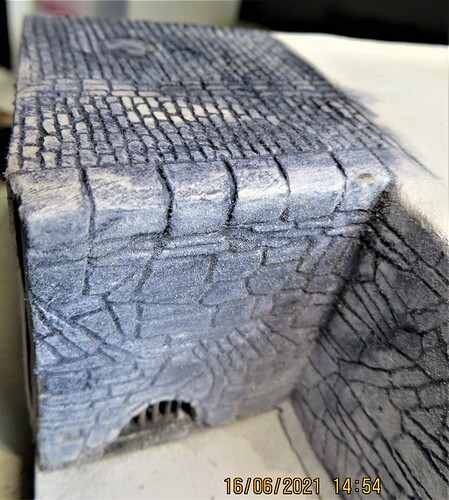Your vision is plausible. There are a zillion track plans in real life. I found this one that shows the Santa Fe in Clifton, Texas. Not the sidings that join the main at both ends, and the “stub” sidings that end.
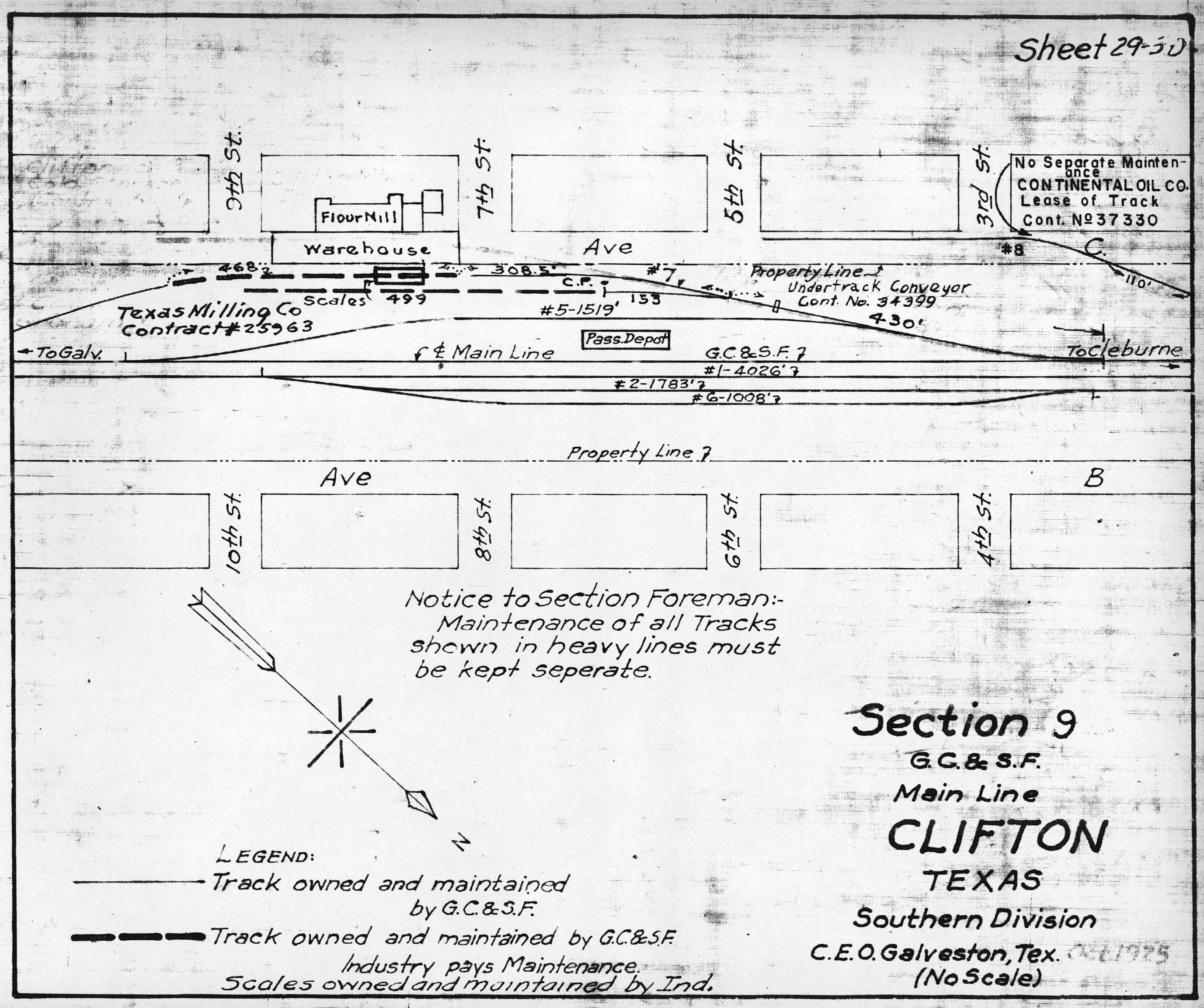
Note the ballast colors. I shot these pix in Aug. 2008.
Luxembourg City
Germany
Finally, the ballast on the Durango & Silverton
Sidings were oft ballasted with cinders
In Durango, end-of-track was literally the end
A TM for ballast - now I’ve seen it all! ![]()
Bear in mind that ballast on a well-used line will collect soot, grease, oil, rust flakes, and swirled dust from the vortex of passing trains, so after a while it all goes a dark mucky brown. Many RR modellers will lay the ballast and then airbrush it to make it look “used”.
Really good progress on the projects in here as well as ref shots! Thanks for sharing.
The Rail Shunting Loco is proceeding forward with the running gear almost finished today.
Tom, Quite right. But I think that depends on the stretch of track. Where the trains “cruise”, my observation is the ballast stays fairly clean. In yards and other places trains start and stop, the track nasties up. This photo is from near my ol stomping grounds. Two characteristics to note: the ballast between the rails is a filthy brown as Tom describes, while that siding to the right is cleaner.
In this scene, note how the ballast color between the tracks is little different from the ballast along the shoulders.
Thanks for sharing all the images Fred, extremely interesting to see all the variations in colour, it makes sense that it would vary from country-to-country, and even regionally within a country, but not something I would have thought of, 
 .
.
Cheers,  ,
,
G
Really liking the detail you’re putting in to your scratchbuild Kosprueone, and you appear to have made a cracking job of cleaning up the remains of the sprue gates on the rail wheels, 
 .
.
Cheers,  ,
,
G
Hi all,
I started scribing the stonework for the ‘steps’ run of quay walling and realised that I wasn’t happy with my first attempt on the small end wall, so I skimmed over the original work with a thin coat of DAS and re-scribed the stonework.
I have glued these two elements in position and started to apply DAS to blend in the two walls where they abutt, and where the wall meets the, to be cobbled’ upper horizontal surface.
I still need to ‘texture’ the stonework and colour it properly, I also need to scribe the recessed ‘emergency escape’ recessed area…
Cheers,  ,
,
G
I’ve done the Durango Silverton run! That was a really great experience.
This book arrived, and it’s awesome! I started reading some of it and realize it’s going to take some careful reading and will be a great reference. Thanks for calling it to my attention.
A little progress on the s.SP. The glue has been drying for several days. Ready to start the Flakvierling and paint the rail car.
Was there some warping, or any such, that required the glue to be given several days to cure Fred?
As an aside, I have what might be a dumb question relating to your exchanges relating to ballast would the ‘colour’ of the ballast between the rails be the same, irrespective of whether the traffic was steam, diesel, or electric,  ?
?
Cheers,  ,
,
G
Hi all,
Firstly, thanks to Kosprueone for the positive feedback, much appreciated,  .
.
Today I managed to insert the recess for the escape ladder, and started to cobble (no pun intended,  ) together the ladder. I need to sand and scribe the area so they blend together better,
) together the ladder. I need to sand and scribe the area so they blend together better,  .
.
The track also arrived in today’s post, so cut it to shape and inserted it into position.
And I started to have a go at scribing some ‘cobbles’ to the quayside surface, my technique needs improvement, but any badly carved areas can be hidden by dockyard clutter,  .
.
The circular dent in the cobbles will hopefully become a manhole cover,  .
.
Cheers,  ,
,
G
Hi G, your Dockside is coming walking. At Stone work looks great. Yeah, that divit should become a manhole cover or maybe a storm grate LOL !
Nice work, Fred
That is looking brilliant already G … whats the blue foam ? I just want to see the water that water effect going in … 
Hi G,
No warping or such. Simply not enough hours in a week to do everything I have on my plate. ![]()
Interesting question - nothing dumb about it.
Tom, barkingdigger, works on the railroad. Tom, what is your observation?
I think there would be some difference. All three types of locos use, and thus shed, grease and oil. All three will generate brake dust when braking, and sand when in need of additional traction. Diesel-electrics often leave a line of some liquid inside the rails but I think I’ve seen that in the steam era, too. Diesels belch soot and steam locos do, too, along with cinders for coal and wood burners. Electrics would not create soot. Note how uniformly grungy everything in this photo is, except for the couple of tracks with light colors along them - probably sand from starting trains.
My WAG is that an all electric locomotive operation would be a bit cleaner because it would not exhaust soot. The first image is a Milwaukee Road electric leading diesel-electrics. Note the color of the tracks.

Next, a modern electrified line.

This is interesting: B&O’s Sand Patch grade. Look at the color of the tracks in the first image. I assume the far track with the train is downhill, while the closest is up hill, with the engines working hard.
My thoughts are that steam era tracks would be a little dirtier, while an electrified line would be cleanest. But where trains would stop - or brake down a grade - the track would have break dust, and where they go up hill you can expect to see sand. Where trains would “cruise”, the track would be cleanest.
Tom, your thoughts?
I wish I worked on the railroad! (I grew up next to the tracks of the LIRR, and have been modelling it for decades…)
I agree that electric service would have the cleanest track ballast. Steam-era had grease and loads of black-ish coal dust that got EVERYWHERE, while the diesel era saw mostly that purple-brown oily tinge from diesel fumes instead of browny-black soot. Yards would be universally filthy (lots of short movements, belching soot and/or diesel into the air all day!) while mainline tracks might be more dust-coloured as the swirling vortex of passing trains whipped up a mini-duststorm. But all three types of traffic would also deposit rusty dust from brakes and wheels. And all of this depended on the volume of traffic, how long since the last re-ballasting episode, weather, etc. (A lightly-used track might gather enough wind-blown dust and/or weeds to hide any soot…) Since it varies from place to place the best bet is to find photos of trains in the area you are modelling and use them for reference - a simple Google of the local railroad name should turn up tons!
Tom, I apologies, I thought you worked for a railroad. Who am I thinking of???
Thanks for the input. 
